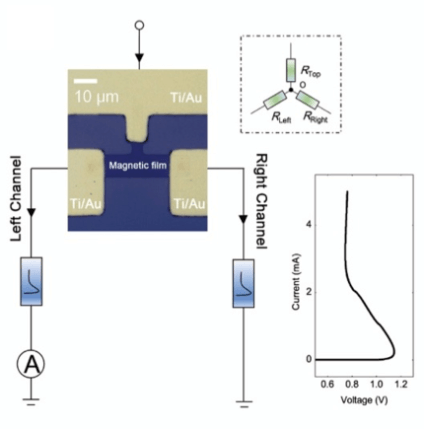
Xiaozhong Zhang
Tsinghua University, China
Title: Semiconductor Nonlinear Effect Assisted Magnetoresistance and Magnetic Logic
Biography
Biography: Xiaozhong Zhang
Abstract
Discovery of giant magnetoresistance (MR) won Nobel Prize in Physics in 2007 and it initiated spintronics. However, most MR devices are based magnetic materials which are not compatible with Si based devices. Coupling semiconductor nonlinear transport effect and Hall effect in semiconductor, we developed a Si-based geometrical enhanced MR device whose room-temperature MR ratio reaching 30% at 0.065 T. We also realized the geometrical enhanced MR in GaAs and Ge. We further coupled semiconductor nonlinear transport effect and anomalous Hall effect in a perpendicular magnetic anisotropic (PMA) material and realized a giant MR of 22000% at 1 mT in PMA material at room temperature. Based on our Si based MR device, we developed a current-controlled reconfigurable MR logic device, which could perform all four basic Boolean logic including AND, OR, NAND and NOR in one device. We proposed an alternative way to realize magnetoelectric logic by coupling spin-dependent transport effect in magnetic material and nonlinear transport effect in semiconductor material. All four basic Boolean logic operations could be performed with high output ratio. We further proposed a magnetic logic-memory device by coupling anomalous Hall Effect in magnetic material and negative differential resistance phenomena in semiconductor. All four basic Boolean logic operations could be programmed by magnetic bit at room temperature with high output ratio (>1000%) and low magnetic field (~5 mT). This device demonstrated that non-volatile information reading, processing and writing could be realized in one step and one device. Hence, logic and non-volatile memory could be closely integrated in one chip. The time and energy used in the processes of information transformation and transfer could be saved. This might break through the von Neumann performance bottleneck and make computer more energy efficiency and higher performance.
Image

Figure-1: Schematics of our magnetic device structure.
Recent Publications:
1. Luo ZC, et al. (2017) Large magnetoresistance in silicon at room temperature induced by onsite Coulomb interaction, Advanced Electronic Materials, 3:1700186.
2. Rajan R, et al. (2017) Diode and inhomogeneity assisted extremely large magnetoresistance in silicon, Applied Physics Letters 111: 042406.
References
- Luo Z C, et al. (2017) Large magnetoresistance in silicon at room temperature induced by onsite Coulomb interaction. Advanced Electronic Materials; 3: 1700186.
- Rajan, R, et al. (2017) Diode and inhomogeneity assisted extremely large magnetoresistance in silicon. Applied Physics Letters; 111: 042406.
- Wan C H, et al. (2011) Geometrical enhancement of low-field magnetoresistance in silicon. Nature; 477: 304-307.
- Luo Z C, et al. (2017) Reconfigurable magnetic logic combined with non-volatile memory writing. Advanced Materials; 29: 1605027.
- Luo Z C, et al. (2016) Extremely large magnetoresistance at low magnetic field by coupling nonlinear transport effect and anomalous Hall effect. Advanced Materials; 28: 2760–2764.
